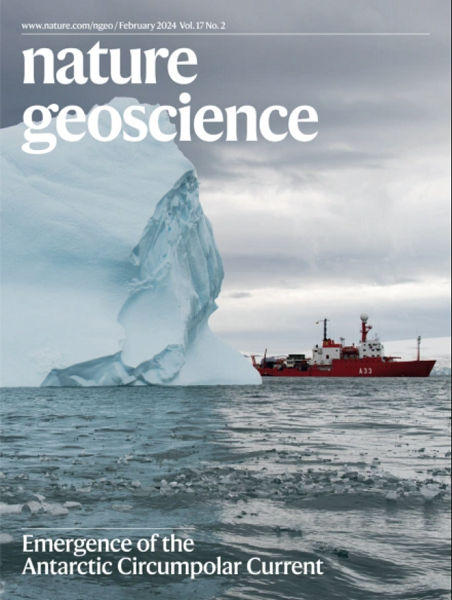Global groundwater warming due to climate change
IF 15.7
1区 地球科学
Q1 GEOSCIENCES, MULTIDISCIPLINARY
引用次数: 0
Abstract
Aquifers contain the largest store of unfrozen freshwater, making groundwater critical for life on Earth. Surprisingly little is known about how groundwater responds to surface warming across spatial and temporal scales. Focusing on diffusive heat transport, we simulate current and projected groundwater temperatures at the global scale. We show that groundwater at the depth of the water table (excluding permafrost regions) is conservatively projected to warm on average by 2.1 °C between 2000 and 2100 under a medium emissions pathway. However, regional shallow groundwater warming patterns vary substantially due to spatial variability in climate change and water table depth. The lowest rates are projected in mountain regions such as the Andes or the Rocky Mountains. We illustrate that increasing groundwater temperatures influences stream thermal regimes, groundwater-dependent ecosystems, aquatic biogeochemical processes, groundwater quality and the geothermal potential. Results indicate that by 2100 following a medium emissions pathway, between 77 million and 188 million people are projected to live in areas where groundwater exceeds the highest threshold for drinking water temperatures set by any country. Model projections suggest that shallow groundwater temperatures will increase by 2.1 °C by the end of the century, with groundwater expected to exceed drinkable temperatures in a number of populated regions under a medium-emissions pathway.


气候变化导致全球地下水变暖
含水层蕴藏着最大的未冻结淡水,因此地下水对地球上的生命至关重要。令人惊讶的是,人们对地下水如何在空间和时间尺度上对地表变暖做出反应知之甚少。我们以扩散热传输为重点,模拟了全球范围内当前和预测的地下水温度。我们的研究表明,根据保守预测,在中度排放路径下,2000 年至 2100 年期间,地下水位深度(不包括永久冻土地区)的地下水平均升温 2.1 °C。然而,由于气候变化和地下水位深度的空间差异,区域浅层地下水变暖模式有很大不同。安第斯山脉或落基山脉等山区的变暖率预计最低。我们说明,地下水温度的升高会影响溪流热制度、依赖地下水的生态系统、水生生物地球化学过程、地下水质量和地热潜力。结果表明,到 2100 年,按照中等排放路径,预计将有 7,700 万到 1.88 亿人生活在地下水温度超过任何国家设定的饮用水温度最高阈值的地区。
本文章由计算机程序翻译,如有差异,请以英文原文为准。
求助全文
约1分钟内获得全文
求助全文
来源期刊

Nature Geoscience
地学-地球科学综合
CiteScore
26.70
自引率
1.60%
发文量
187
审稿时长
3.3 months
期刊介绍:
Nature Geoscience is a monthly interdisciplinary journal that gathers top-tier research spanning Earth Sciences and related fields.
The journal covers all geoscience disciplines, including fieldwork, modeling, and theoretical studies.
Topics include atmospheric science, biogeochemistry, climate science, geobiology, geochemistry, geoinformatics, remote sensing, geology, geomagnetism, paleomagnetism, geomorphology, geophysics, glaciology, hydrology, limnology, mineralogy, oceanography, paleontology, paleoclimatology, paleoceanography, petrology, planetary science, seismology, space physics, tectonics, and volcanology.
Nature Geoscience upholds its commitment to publishing significant, high-quality Earth Sciences research through fair, rapid, and rigorous peer review, overseen by a team of full-time professional editors.
 求助内容:
求助内容: 应助结果提醒方式:
应助结果提醒方式:


